Shipping goods from China to the United States is a process that involves multiple factors, including the mode of transport, customs clearance, and potential delays. Whether you are a business owner looking to import bulk goods or an individual ordering items online, understanding how long shipping takes can help you plan accordingly. This blog will explore the various shipping methods available, their estimated transit times, and the factors that can impact delivery speed.
Shipping Methods from China to the US
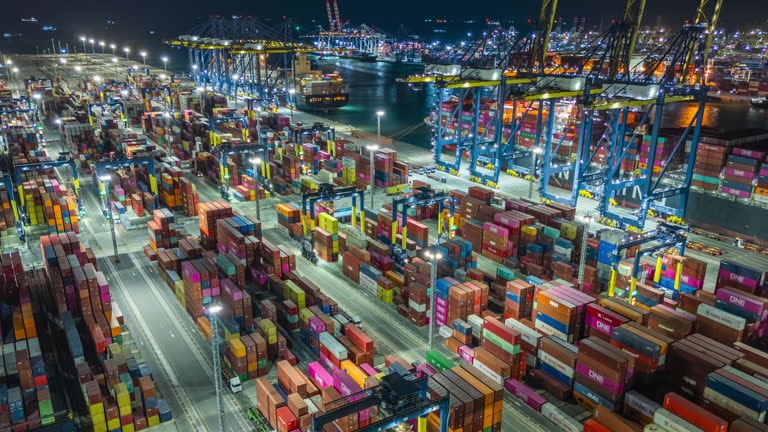
1. Express Shipping
Express shipping is the fastest option for transporting goods from China to the US. Major courier express freight companies such as DHL, FedEx, UPS, and TNT offer express services that typically take between 2 to 7 days for delivery, depending on the service level selected and the shipping destination within the US east coast.
Advantages of Express Shipping:
- Fastest delivery time
- Reliable tracking and customer service
- Secure handling of packages
- Convenient for small parcels and urgent shipments
Disadvantages of Express Shipping:
- More expensive than other methods
- Weight and size limitations for packages
- Additional customs duties and taxes may apply
2. Air Freight
Air freight is another relatively fast shipping option that is ideal for medium-sized shipments that do not require express delivery west coast. The average transit time for air freight is 5 to 12 days, depending on factors such as customs clearance, flight availability, and the shipping company’s network courier service.
Advantages of Air Freight:
- Faster than sea freight
- Suitable for medium-sized shipments
- Lower cost than express shipping for bulk goods
Disadvantages of Air Freight:
- More expensive than sea freight
- May require additional logistics arrangements for inland delivery
- Possible customs clearance delays
3. Sea Freight (Container Shipping)
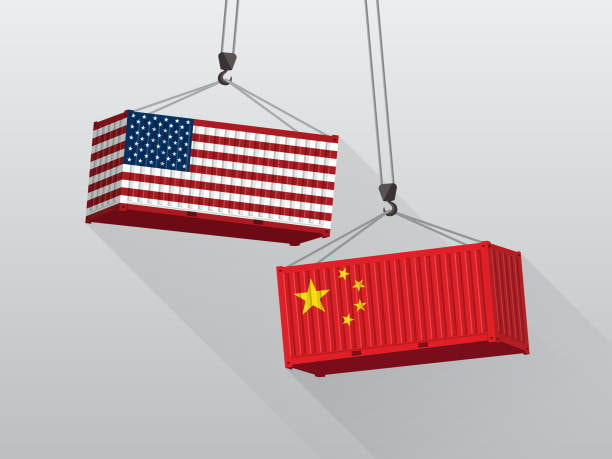
Sea freight is the most common and cost-effective method for transporting large volumes of goods from China to the US. This method is used by businesses that import bulk goods and require a cost-efficient shipping solution. The average transit time is 15 to 60 days, depending on factors such as the shipping route, customs clearance, and port congestion.
Types of Sea Freight Shipping:
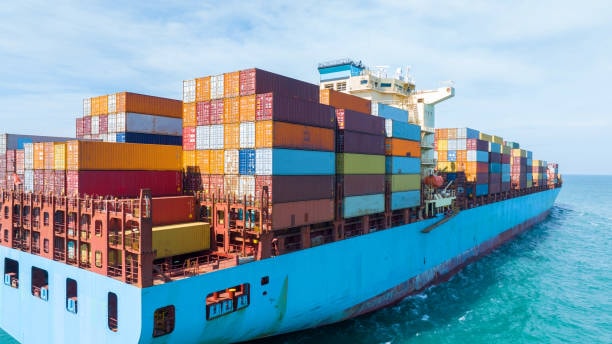
- Full Container Load (FCL): The entire container is booked by one shipper, offering faster processing and reduced risk of damage.
- Less than Container Load (LCL): Multiple shippers share a container, leading to longer transit times due to additional handling.
Advantages of Sea Freight:
- Lowest cost for bulk shipments
- Suitable for large and heavy items
- More environmentally friendly than air freight
Disadvantages of Sea Freight:
- Slowest shipping method
- Higher risk of delays due to port congestion and customs clearance
- Additional costs for warehousing and inland transportation
4. Rail Freight (Alternative for Certain Routes)
Although rail freight is not as common for shipping between China and the US due to the ocean separating the two countries, China has developed rail transport to Europe, and goods can then be transferred by air or sea to the US. This option may take 20 to 40 days, depending on the cargo shipped final destination.
Types of Delivery Services We Offer for Shipments from China to the United States
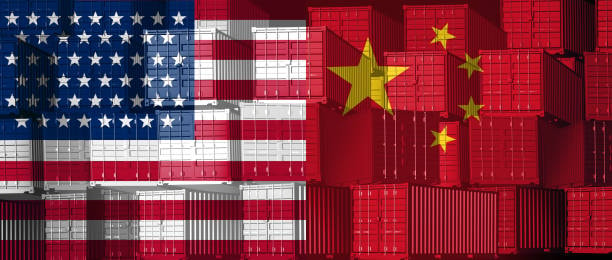
Our shipping company also provides comprehensive and reliable shipping solutions designed to meet the diverse logistical needs of businesses transporting goods from China to the United States. We facilitate the entire shipping process, starting with the pickup of shipments from any city in China, ensuring a seamless and hassle-free experience for our clients. Whether your goods need to be delivered directly to a designated Amazon fulfillment center or to a specific business or residential address, we handle all necessary arrangements to ensure timely and efficient delivery.
For shipments that require consolidation, we have a specialized processing and dispatch facility located in Yiwu, one of China’s largest trade hubs. This allows us to efficiently collect, process, and package goods from multiple suppliers, optimizing the logistics process and reducing overall transportation costs for our clients. Once shipments are ready for dispatch, deliveries from China are carried out to major entry points on both the East and West Coasts of the United States, including New York and Los Angeles, which serve as primary hubs for further distribution across the country.
When selecting the most suitable shipping method, businesses have the option to choose between air freight and ocean freight, depending on specific transportation requirements. The choice of shipping mode is determined by multiple factors, including the type and nature of the goods being shipped, the total volume and weight of the consignment, and the urgency of the required delivery timeframe.
- Air Freight is the preferred option for shipments that require expedited delivery, ensuring that goods arrive in the United States within a short period. This method is ideal for high-value products, time-sensitive shipments, and smaller consignments, where speed is a priority.
- Ocean Freight is a more cost-effective solution for bulk shipments and large-volume cargo, providing businesses with an economical means of transportation, albeit with longer transit times compared to air freight. This method is well-suited for heavy machinery, industrial equipment, and wholesale merchandise that do not require immediate delivery.
By offering flexible and tailored shipping solutions, we ensure that businesses can select the most efficient and cost-effective transportation method that aligns with their logistical needs and delivery timelines. Our team is available to provide guidance on the most suitable shipping option based on the specific requirements of your cargo.
What Is the Most Effective Shipping Method for Transporting Goods from China to the United States?
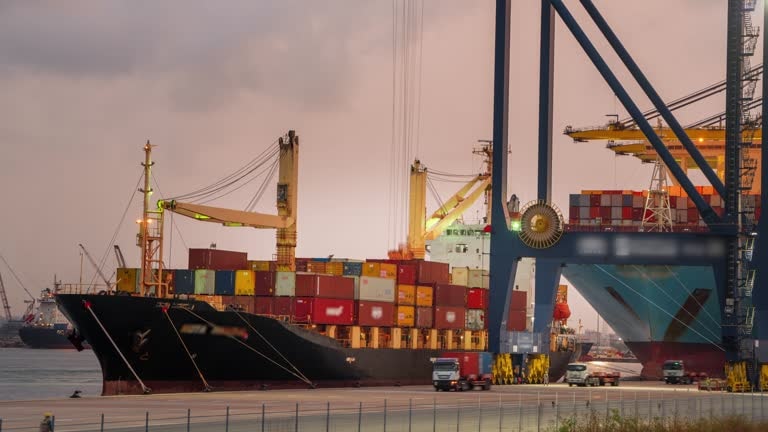
When considering the optimal method for shipping goods from China to the United States, businesses must evaluate factors such as cost, delivery speed, cargo type, and overall logistical efficiency. Among the various modes of transportation available, sea freight and air freight stand out as the two most commonly utilized options, each offering distinct advantages based on the nature of the shipment.
Sea Freight: The Most Economical and Widely Used Shipping Method
For the majority of businesses engaged in international trade, shipping goods by sea is the most cost-effective and practical solution, particularly when dealing with large consignments and bulk shipments. The average transit time for ocean freight shipments traveling from China to various ports in the United States typically ranges between 23 to 40 days, depending on factors such as departure and arrival locations, port congestion, customs clearance procedures, and weather conditions.
Although ocean freight requires longer transit times compared to other modes of transportation, it remains the preferred choice for companies transporting heavy industrial equipment, wholesale merchandise, and large-volume goods. Shipping cargo by sea allows businesses to significantly reduce transportation costs per unit, making it an ideal option for those prioritizing affordability over speed.
Air Freight: The Fastest and Most Efficient Option for Time-Sensitive Shipments

For businesses requiring expedited delivery, air freight provides the quickest and most reliable transportation solution. Goods shipped via air generally arrive in the United States within a timeframe of 7 to 10 days, making this mode of transport particularly suitable for shipping time-sensitive products, high-value goods, and perishable commodities that require swift transit.
Although air freight comes at a higher cost compared to maritime shipping, its rapid delivery speeds make it the best option for businesses that cannot afford delays in their supply chain. This includes industries dealing with electronics, pharmaceuticals, medical supplies, and fashion retail, where product freshness, seasonal demand, or urgent restocking needs are critical.
By carefully weighing the advantages and limitations of both shipping methods, businesses can determine the most appropriate logistics strategy based on their unique requirements. While sea freight offers affordability and high-volume capacity, air freight ensures speed, reliability, and efficiency, particularly for urgent shipments. Ultimately, selecting the best shipping method depends on balancing cost, delivery time, and cargo specifications to achieve the most effective supply chain solution.
When Is It Most Suitable to Utilize Sea Freight for Shipping Goods from China to the United States?

Sea freight serves as an optimal shipping solution for businesses and individuals who need to transport large volumes of goods in a cost-effective manner, even if longer transit times are required. Choosing ocean freight over other modes of transportation is highly recommended in specific circumstances, particularly when size, weight, and shipment type dictate the need for maritime shipping. Below are several key situations where sea freight is the most appropriate choice for transporting goods from China to the United States.
1. When Your Shipment Falls Within a Specific Volume Range
Sea freight is the preferred transportation method when the total volume of your shipment exceeds one cubic meter but remains below 15 cubic meters. This type of shipment is commonly referred to as Less than Container Load (LCL) shipping, where your goods are consolidated with other shipments into a single container. This option is particularly beneficial for businesses or individuals who do not require an entire shipping container but still need a cost-efficient method to transport their cargo overseas.
For shipments that require 15 cubic meters or more, it is advisable to opt for Full Container Load (FCL) shipping, where an entire container is exclusively allocated to your goods. This method sea shipping ensures enhanced security, reduced handling risks, and lower per-unit transportation costs for large-scale shipments.
2. When Your Cargo Contains Hazardous Materials Restricted by Air Freight
Certain goods are classified as hazardous materials and are not permitted to be transported via air by sea freight companies due to strict airline safety regulations. If your shipment consists of dangerous goods that cannot be accepted for air transport, sea freight becomes the only viable alternative. Cargo that falls into this category may include chemicals, industrial equipment with fuel residues, pressurized gases, and flammable substances, all of which require special handling and compliance with maritime safety protocols.
3. When Delivery Speed Is Not a Primary Concern
If your shipping requirements do not necessitate urgent delivery, or if you are sending your shipment well in advance to accommodate long lead times, then sea freight is the most economical option. Maritime transportation from China to the United States generally requires 23 to 40 days, depending on factors such as port congestion, customs clearance, weather conditions, and the specific route ship cargo is taken. Businesses that operate on a flexible schedule or seasonal inventory planning often choose sea freight to minimize transportation expenses while still ensuring their products arrive as needed.
4. When Transporting Cargo with Non-Standard Dimensions or Oversized Loads
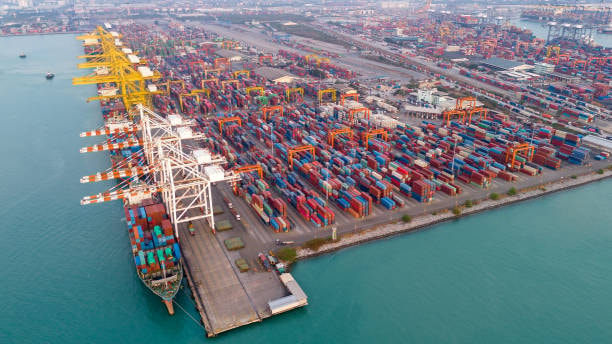
For shipments that include non-standard size cargo, oversized machinery, industrial equipment, or exceptionally heavy goods, sea freight remains the most practical mode of transport. Due to the size and weight limitations imposed by both sea and air freight transportation, large and bulky items are best suited for maritime shipping, where they can be securely loaded onto vessels and transported in specialized shipping containers or bulk cargo holds.
By carefully assessing the nature of your shipment, delivery urgency, cargo type average shipping time, and budget considerations, you can determine whether sea freight is the most efficient and cost-effective option for transporting goods from China to the United States. In cases where affordability and large-volume capacity outweigh the need for speed, ocean freight emerges as the preferred solution for global trade and logistics.
Categories of Shipments We Accept and Those We Do Not Transport
The transportation of goods involves various regulations, safety measures, and logistical requirements. While we specialize in handling large-scale commercial shipments, there are specific categories of goods that fall outside the scope of our services due to safety, legal, or operational constraints. Below is a detailed breakdown of the shipments we accept and those that we are unable to transport.
| Shipments We Accept | Shipments We Do Not Carry |
| We facilitate the transportation of commercial goods that meet a minimum weight requirement of 100 kilograms (kg) or occupy a volume of at least one cubic meter (m³). These shipments typically involve wholesale merchandise, industrial equipment, and other large-scale consignments intended for commercial purposes. | We do not handle small parcels that weigh 30 kilograms (kg) or less, as these are better suited for standard postal and courier services that specialize in lightweight package delivery. |
| We accept cargo shipments starting from 500 kilograms (kg) and above, ensuring that businesses and commercial enterprises can efficiently transport large consignments across various destinations. Bulk shipments in this category often include raw materials, machinery, and heavy-duty equipment. | We are unable to transport personal belongings, including household items, clothing, personal-use electronics, and similar goods that do not fall under commercial or industrial shipping categories. |
| We provide shipping services for dangerous goods, including hazardous materials, chemicals, and regulated substances, strictly under the condition that all necessary official documentation, permits, and regulatory compliance measures are fully met. These shipments require specialized handling and must adhere to international safety standards. | We do not accept the transportation of liquid and bulk cargoes, as these require specialized containment, regulatory approvals, and safety measures beyond the scope of our shipping services. |
| We are unable to process shipments containing food products, including perishable and non-perishable consumables, due to strict import-export regulations and sanitary requirements that vary across different countries and regions. | |
| We strictly do not transport excisable goods, including alcoholic beverages and tobacco products, as these items are subject to specific licensing, duties, and regulatory restrictions that require specialized handling and permits. | |
| We do not handle the shipment of transportation vehicles, such as cars, boats, heavy machinery, and other complex equipment, due to their size, special handling requirements, and customs restrictions that often apply to vehicle transport. | |
| For security and liability reasons, we do not accept shipments containing high-value items such as jewelry, as these items require advanced security measures and specialized insurance coverage beyond our standard shipping operations. | |
| We strictly prohibit the shipment of counterfeit goods and replicas of well-known brands, as these products violate intellectual property rights and international trade regulations, potentially leading to legal consequences for the shipper. |
By adhering to these guidelines, we ensure a streamlined, efficient, and legally compliant shipping process for all our clients. If you require assistance in determining whether your shipment falls within our accepted categories, our team is available to provide further clarification and support.
Port-to-Port Shipping Terms and Costs from China to the USA
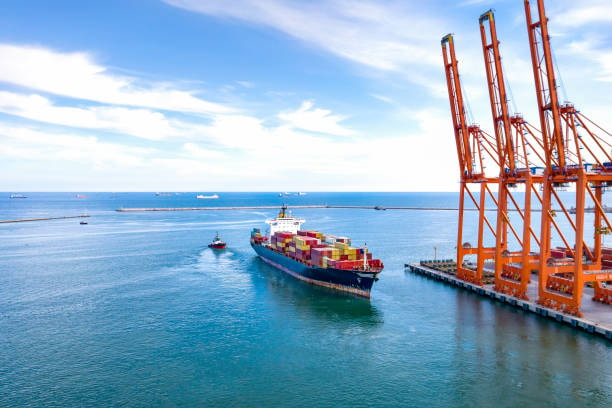
Ocean freight is the most commonly used and cost-effective method for shipping goods from China to the United States. It allows businesses to transport large volumes of cargo at lower rates compared to air freight. Below is an overview from international freight forwarder, of the port-to-port transit times and shipping costs per kilogram for major shipping routes between China and the USA.
Port-to-Port Shipping Costs & Transit Times
| Port of Departure | Port of Arrival | Transit Time | Shipping Cost (per kg) |
| Yantian, Guangdong | Los Angeles, CA | 14-20 days | From $0.65 |
| Yantian, Guangdong | New York, NJ | 30-42 days | From $1.30 |
| Nansha, Guangzhou, Guangdong | Los Angeles, CA | 15-22 days | From $0.65 |
| Nansha, Guangzhou, Guangdong | New York, NJ | 32-42 days | From $1.30 |
| Shanghai, Shanghai | Los Angeles, CA | 11-19 days | From $0.65 |
| Shanghai, Shanghai | New York, NJ | 26-35 days | From $1.30 |
| Ningbo, Zhejiang | Los Angeles, CA | 13-21 days | From $0.65 |
| Ningbo, Zhejiang | New York, NJ | 28-37 days | From $1.30 |
| Xiamen, Fujian | Los Angeles, CA | 14-20 days | From $0.65 |
| Xiamen, Fujian | New York, NJ | 30-44 days | From $1.30 |
| Qingdao, Shandong | Los Angeles, CA | 16-23 days | From $0.65 |
| Qingdao, Shandong | New York, NJ | 34-47 days | From $1.30 |
Why Choose Ocean Freight for China-to-USA Shipments?
- Cost-Effective – Shipping via sea freight is significantly cheaper than air freight, making it ideal for bulk shipments and large cargo volumes.
- High Volume Capacity – Containers can accommodate large quantities of goods, allowing businesses to consolidate shipments into a single transport, reducing costs and logistical complexities.
For companies and individuals looking for an economical and efficient ocean shipping solution, ocean freight remains the best choice for transporting goods from China to the USA.
Factors Affecting Shipping Time from China to the US
1. Customs Clearance
Customs processing can add significant delays to shipping times, especially if proper documentation is not provided. Import duties, taxes, and inspections can cause shipments to be held up for several days or even weeks.
2. Weather Conditions and Natural Disasters
Storms, typhoons, and other natural disasters can disrupt shipping schedules, particularly for air and sea freight. Bad weather can lead to flight cancellations, port closures, and transportation disruptions.
3. Holiday Seasons and Peak Shipping Periods
Certain times of the year, such as Chinese New Year, Golden Week, and Black Friday/Cyber Monday sales, see a spike in shipping demand, leading to congestion and longer delivery times. Planning shipments outside of peak periods can help avoid delays.
4. Shipping Route and Destination in the US
The location of the shipment date final delivery also impacts transit time. Shipments to major US cities such as Los Angeles, New York, and Chicago tend to arrive faster than shipments to rural areas due to better infrastructure and logistics networks.
5. Carrier and Shipping Service Level
Choosing a premium service with a reputable carrier can significantly impact how fast a shipment arrives. Express shipping providers offer different service levels that prioritize urgent deliveries for an extra fee.
Comparison of Shipping Methods Based on Delivery Time
| Shipping Method | Estimated Delivery Time | Best For |
| Express Shipping | 2-7 days | Urgent and small shipments |
| Air Freight | 5-12 days | Medium-sized shipments |
| Sea Freight | 15-60 days | Bulk goods and cost efficiency |
| Rail Freight | 20-40 days | Alternative to sea freight for certain routes |
How to Speed Up Shipping from China to the US
- Use Express Shipping for Urgent Needs – If time is crucial, opting for express services like DHL or FedEx ensures the fastest delivery.
- Plan Shipments in Advance – Avoid peak seasons and book shipments early to prevent delays.
- Work with Reliable Freight Forwarders – Choosing an experienced logistics provider can help navigate customs and speed up processing.
- Ensure Proper Documentation – Providing accurate invoices, packing lists, and customs declarations reduces the risk of delays at customs.
- Consider Warehousing in the US – Storing inventory in a US-based fulfillment center can significantly cut down delivery time to customers.
Conclusion
Shipping from China to the US involves multiple factors that influence delivery times, including the choice of shipping method, customs clearance processes, and seasonal demand fluctuations. Express shipping is the fastest but most expensive, while sea freight offers cost-effective solutions for bulk goods at the expense of speed. Air freight and rail freight serve as intermediate options that balance time and cost. Regardless of the method chosen, understanding shipping timelines, planning ahead, and working with reliable logistics partners can help ensure a smooth and timely delivery process.
Shipping goods from China to the USA requires careful planning, with different transportation methods available depending on factors such as shipment size, urgency, and cost considerations. Sea freight remains the most economical choice for large shipments, offering affordable rates and high volume capacity despite longer transit times. Air freight, on the other hand, has freight costs and is the ideal option for urgent or perishable goods that require quick delivery.
Understanding the port-to-port shipping times and costs is crucial for businesses and individuals looking to optimize their logistics operations. Choosing the right shipping method, port of departure, and delivery option can help reduce overall expenses and ensure timely arrivals. Shipping from China to the US involves multiple factors that influence delivery times, including the choice of shipping method, customs clearance processes, and seasonal demand fluctuations. Express shipping is the fastest but most expensive, while sea freight offers cost-effective solutions for bulk goods at the expense of speed. Air freight and rail freight serve as intermediate options that balance time and cost. Regardless of the method chosen, understanding shipping timelines, planning ahead, and working with reliable logistics partners can help ensure a smooth and timely delivery process.




